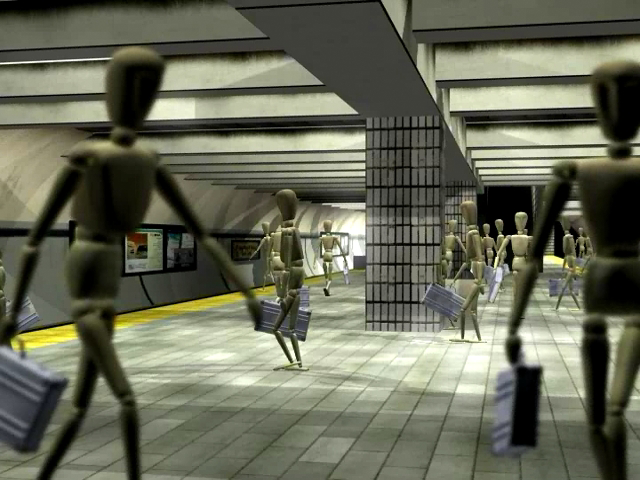The character studio feature set in 3ds Max provides professional tools for animating 3D characters. It is an environment in which you can quickly and easily build skeletons (also known as character rigs) and then animate them, thus creating motion sequences. You use the animated skeletons to drive the movement of geometry, thus creating virtual characters. You can generate crowds of these characters and animate crowd movement using a system of delegates and procedural behaviors.

Crowd of mannequins in a subway station animated using character studio
character studio comprises three components:
- Biped builds and animates skeletal armatures, ready for character animation. You can combine different animations into sequential or overlapping motion scripts, or layer them together. You can also use Biped to edit motion capture files.
Note: Biped does not create character mesh objects. Create your character mesh before using Biped to create a skeleton for it.
-
Physique uses the biped armatures to animate the actual character mesh, simulating how the mesh flexes and bulges with the movement of the underlying skeleton.
Note: You can use Physique with other hierarchies beside the biped skeleton. And, as an alternative to Physique, you can use the Skin modifier to animate a character mesh with any hierarchy, including a biped.
- Crowd animates groups of 3D objects and characters using a system of delegates and behaviors. You can create crowds with highly complex behaviors.
If you are new to 3ds Max, read What You Should Know to use character studio and Understanding character studio Workflow.
If you are already use 3ds Max, proceed to Understanding Biped to continue.
To find out about Physique, read Understanding Physique.
